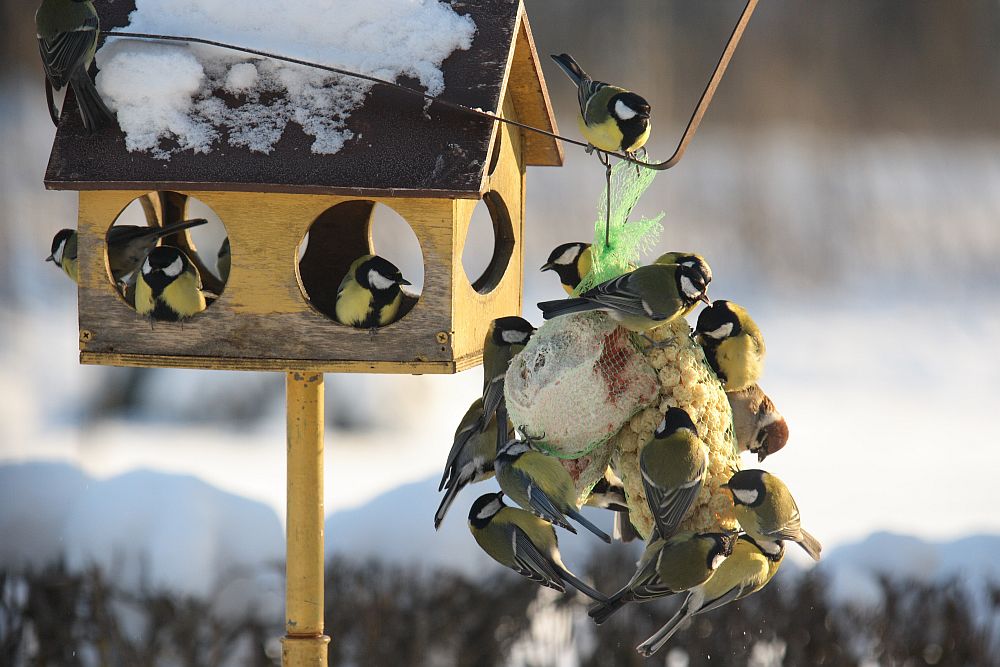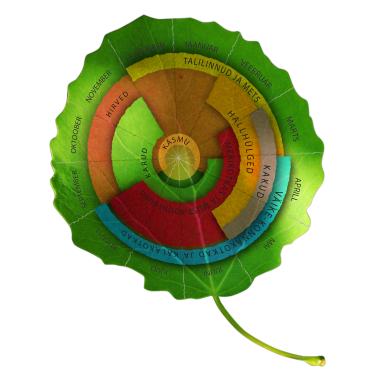Editor of science news from the Year of the Great Tit Marko Mägi, marko.magi@ut.ee, bird ecology researcher at University of Tartu
Translation Liis
That tits are the most numerous of bird feeder visitors is also confirmed by the results of the Winter Garden Bird Watch. The tits bustle briskly at the bird feeders in early light, leaving only when dusk falls, and it is almost impossible to make sure who came, who left, to where and whether a bird actually returns to the same bird feeder.
On ringing birds it has been seen that tits stay rather near the birdfeeders in one area and seldom go off to new hunting grounds. Keeping locally to feeders seems apparently to be an optimal solution for the birds – why go off into unknown territories to test one’s luck if food is guaranteed nearby. There is however still the possibility that the birds in fact are ”lazy” and will not bother about searching for new foraging grounds. But laziness in the case of birds is extremely difficult to assess.

Photo: Karl Adami
To estimate the local fidelity of birds, great tits and blue tits were caught in Slovakia at bird feeders. Since it is known from telemetric studies that tits move up to 1 kilometre from feeding places, and only rarely 1,5 kilometres, the ringed birds were transported from the places where they were caught to a distance of 7,8 kilometres away which is much greater than the wintertime activity radius of the birds. Thus the local fidelity of the birds and their orientation ability could be more precisely assessed: if the birds were true to their bird feeder they should sooner or later arrive back to it. If however only a good display of food was important they would as well settle at some other source of food near the place where they were released.
On continuing to catch birds at the bird feeders the birds caught earlier and moved began slowly to return ”home”. However, all birds did not return; differences by species as well as sex could be noted. On average the birds needed four weeks to get back, but blue tits were faster than great tits – they used on average one week less. The fraction of blue tits that returned was also larger – of the blue tits nearly half (45,7%) returned, of the great tits only a third (32,5%). The males of both species arrived ”home” faster. The speed of return was also influenced by the amount of food in the bird feeder at the moment when they were caught – the birds returned faster to a more abundantly stocked bird feeder.
A clear conclusion is complicated to draw from the results, but the observations point to an influence of bird species, the sex of the bird and the amount of food in the bird feeder for the evolution of winter sites, fidelity to location and ability to get back home.
Practical conclusions may also be drawn from the study – if you want birds to return to your birdfeeder even from a long distance, it should be diligently filled with food. Whether in fact a ”chaining” of birds to humans should be a goal in itself is for everyone to decide for oneself.
Krištín A, Kaňuch P. 2017. Stay or go? Strong winter feeding site fidelity in small woodland passerines revealed by a homing experiment. Journal of Ornithology 158:53–61. DOI 10.1007/s10336-016-1362-2





